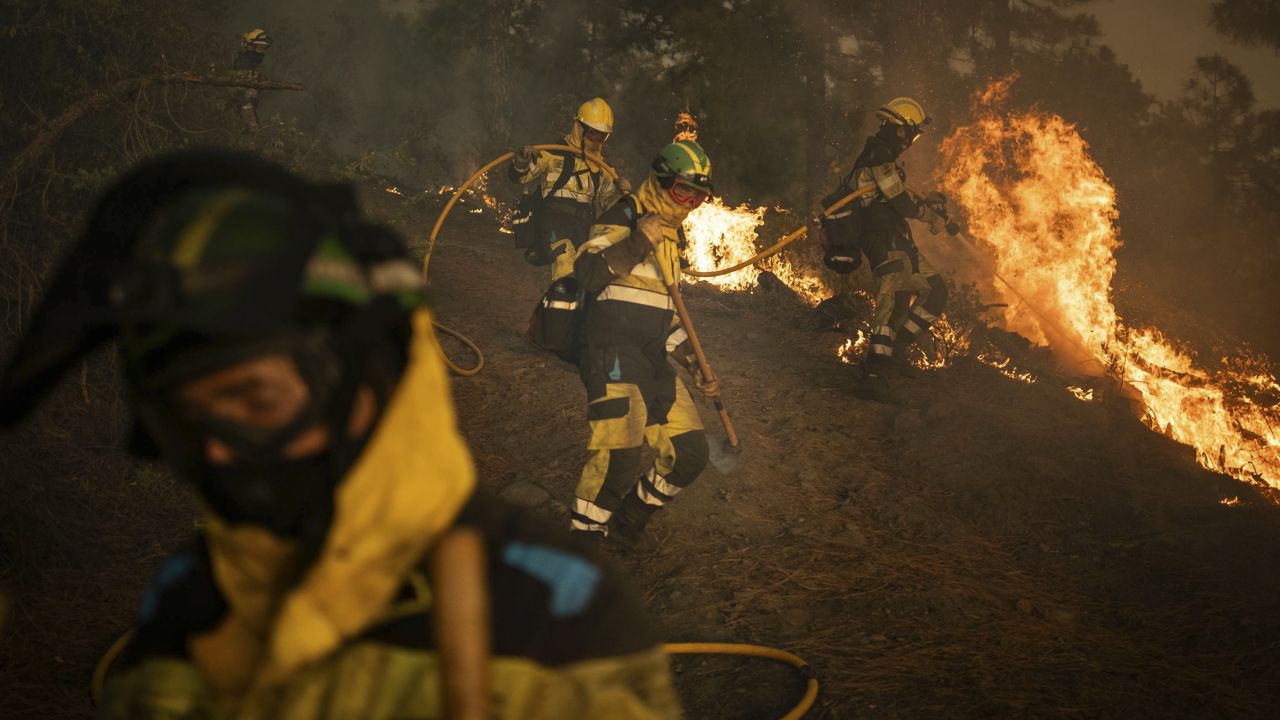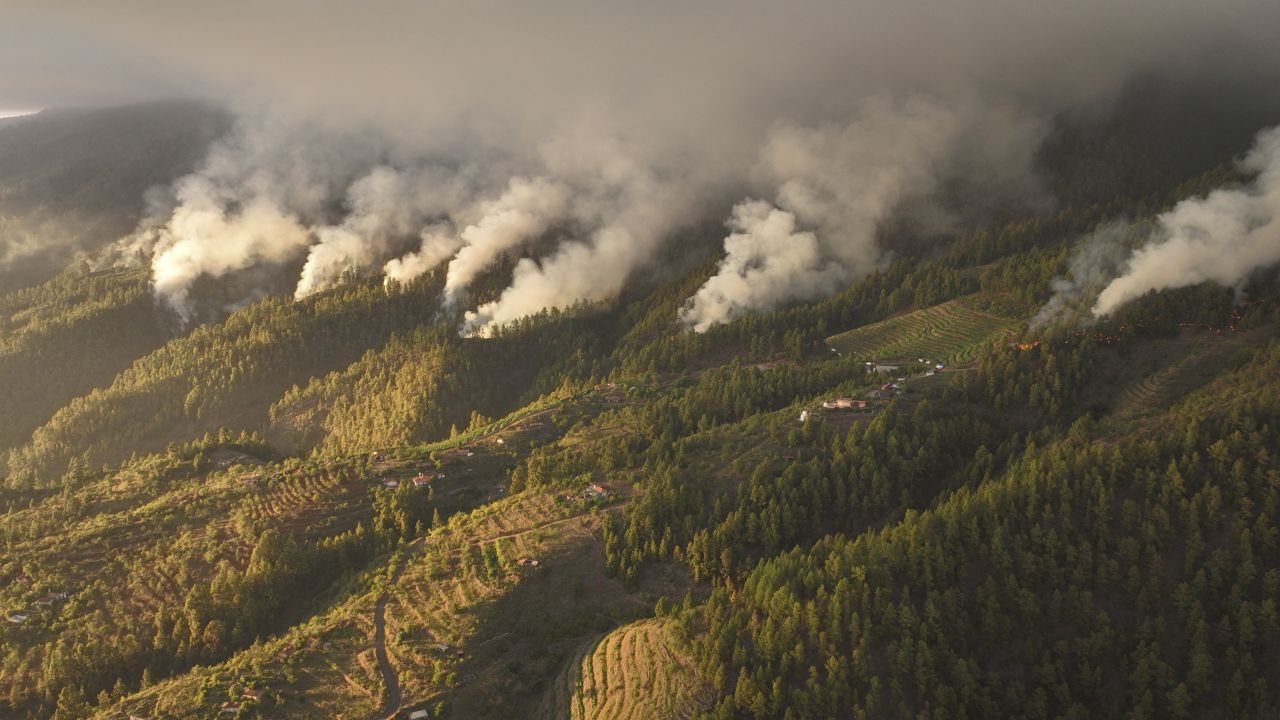
Last week’s “Cerberus” heat wave is making way for another, which Italian weather forecasters have named “Charon” – the ferryman in Greek mythology who carries souls to the underworld.
Italy, Spain and Greece have already faced unrelenting heat for days, but the European Space Agency has warned that the heat wave is only just beginning. In Italy, which has been particularly hard hit, temperatures in many cities are expected to soar above 40 degrees Celsius (104 Fahrenheit).
Hannah Cloke, a climate scientist and professor at the University of Reading, compared the effect to that of a giant oven over the Mediterranean.
“The bubble of hot air that has inflated over southern Europe has turned Italy and surrounding countries into a giant pizza oven,” she said in a statement Monday.
“The hot air which pushed in from Africa is now staying put, with settled high pressure conditions meaning that heat in warm sea, land and air continues to build,” Cloke explained.


Extreme heat is being felt around the world, with the head of the World Health Organization on Monday urging world leaders to “act now” on the climate crisis.
“In many parts of the world, today is predicted to be the hottest day on record,” Tedros Adhanom Ghebreyesus said in a tweet on Monday. “The #ClimateCrisis is not a warning. It’s happening. I urge world leaders to ACT now,” he also said.
High temperatures hit 52.2 degrees Celsius (126 Fahrenheit) on Sunday in northwest China. While in the US, California’s Death Valley reached nearly 52 degrees Celsius (125.6) on Sunday.
Just the beginning
As the human-caused climate crisis accelerates, scientists are clear that extreme weather events such as heat waves will only become more frequent and more intense.
Global temperatures have already risen 1.2 degrees Celsius from pre-industrial levels due to humans burning planet-heating fossil fuels.
“This is just the beginning,” said Simon Lewis, the chair of global change science at the University College London.
“Current policies globally have us hitting 2.7 degrees (Celsius) warming by 2100. That’s truly terrifying,” Lewis said in a statement.
“As scientists agreed last year: There is a rapidly closing window of opportunity to secure a liveable and sustainable future for all. Deep, rapid and sustained cuts in carbon emissions to net zero can halt the warming, but humanity will have to adapt to even more severe heatwaves in the future.” he said.
Last month was the planet’s hottest June on record by a substantial margin, according to the European Union’s Copernicus Climate Change Service, accompanied by record high ocean temperatures and record low levels of Antarctic ice.
That unprecedented heat has continued into this month. The first week of July was the hottest week on record, according to preliminary data from the World Meteorological Organization, putting the planet into what Christopher Hewitt, WMO climate services director, described as “uncharted territory.”
Extreme heat is among the deadliest weather phenomena.
Chris Hilson, the director of the University of Reading’s Centre for Climate and Justice, noted “news reports from tourist hotspots like the Acropolis and Rome have tended to make this extreme weather event seem merely like a summer holiday inconvenience.”
However, he said, the reality is that “these heatwaves often lead to many premature deaths, especially among the elderly.”
“This is a matter of climate justice or fairness because climate harms such as extreme heat are being unequally felt,” Hilson said, and “we must ensure that we continue to cut polluting emissions of carbon dioxide to prevent these events from becoming even more frequent; but the authorities also need to put adaptation measures in place with an eye on these unequally felt harms.”
These measures include “cool zones or drop-in centres with transport to get there, more trees in relevant residential neighbourhoods, and appropriate (and preferably renewable-powered) aircon in care homes,” Hilson added.
Climbing temperatures in Italy, Greece and Spain
As a high pressure anticyclone pushes up from North Africa, temperatures in Europe are expected to come close to, or even breach, the continent’s record of 48.8 degrees Celsius (118.4 degrees Fahrenheit) set in 2021, according to the ESA.
The peak of Italy’s heat will be between Monday and Wednesday, according to Italian weather news service Meteo.it, with temperatures expected to climb above 45 degrees Celsius (113 Fahrenheit) in some parts of the country. Temperatures will remain high at night meaning there will be little respite from the heat.
Italian authorities have advised people to drink plenty of water, eat lighter meals and avoid direct sunlight between 11 a.m. and 6 p.m.
In Greece, where temperatures have risen above 40 degrees Celsius (104 degrees Fahrenheit), authorities were forced to close the Acropolis in Athens, from noon to 5pm local time on Friday and again over the weekend.
In Spain, temperatures in the cities of Seville, Cordoba and Granada have reached 40 degrees Celsius. Even the normally cooler region of Navarra in the north of the country is experiencing up to 40 degrees Celsius.
The heat has also helped prime the land for fires.
Wildfires on the island of La Palma in Spain’s Canary Islands, which started on Saturday morning, have burned through 4,650 hectares (11,490 acres), destroying 20 houses and forcing the emergency evacuation of thousands of people, according to a Reuters report.


Fires have also broken out on Tenerife, another of the Canary Islands, forcing around 50 people to evacuate and burning through around 60 hectares (123 acres).
In Greece, more than 500 firefighters are trying to control the four wildfires.
In the area of Loutraki – a popular seaside town in the Peloponnese, southwest of Athens – 1,200 children were evacuated from a summer camp amid a wildfire there, local mayor Giorgos Gkionis told Greek media. A nursing home was also evacuated.
Meanwhile, two large wildfires are raging southeast and northwest of Athens. The largest of the two started after midday local time in the area of Kouvaras – southeast of Athens – and expanded 7 miles in the first two hours. Residents of Kouvaras as well as the nearby seaside resorts of Saronida, Anavyssos and Lagonisi have been ordered to protectively evacuate.
A fire also closed the airport Monday in the city of Catania on the Italian island of Sicily, with flights suspended until 2 p.m. local time on Wednesday, according to a Twitter post from the airport authorities.
Firefighters have controlled the fire and it’s not yet clear if the region’s high temperatures played any role. Catania was one of several cities under a hot weather red alert on Sunday, according to a Reuters report.
Sugam Pokharel, Chris Liakos, Sharon Braithwaite, Angela Fritz, Al Goodman and Barbie Latza Nadeau contributed reporting




